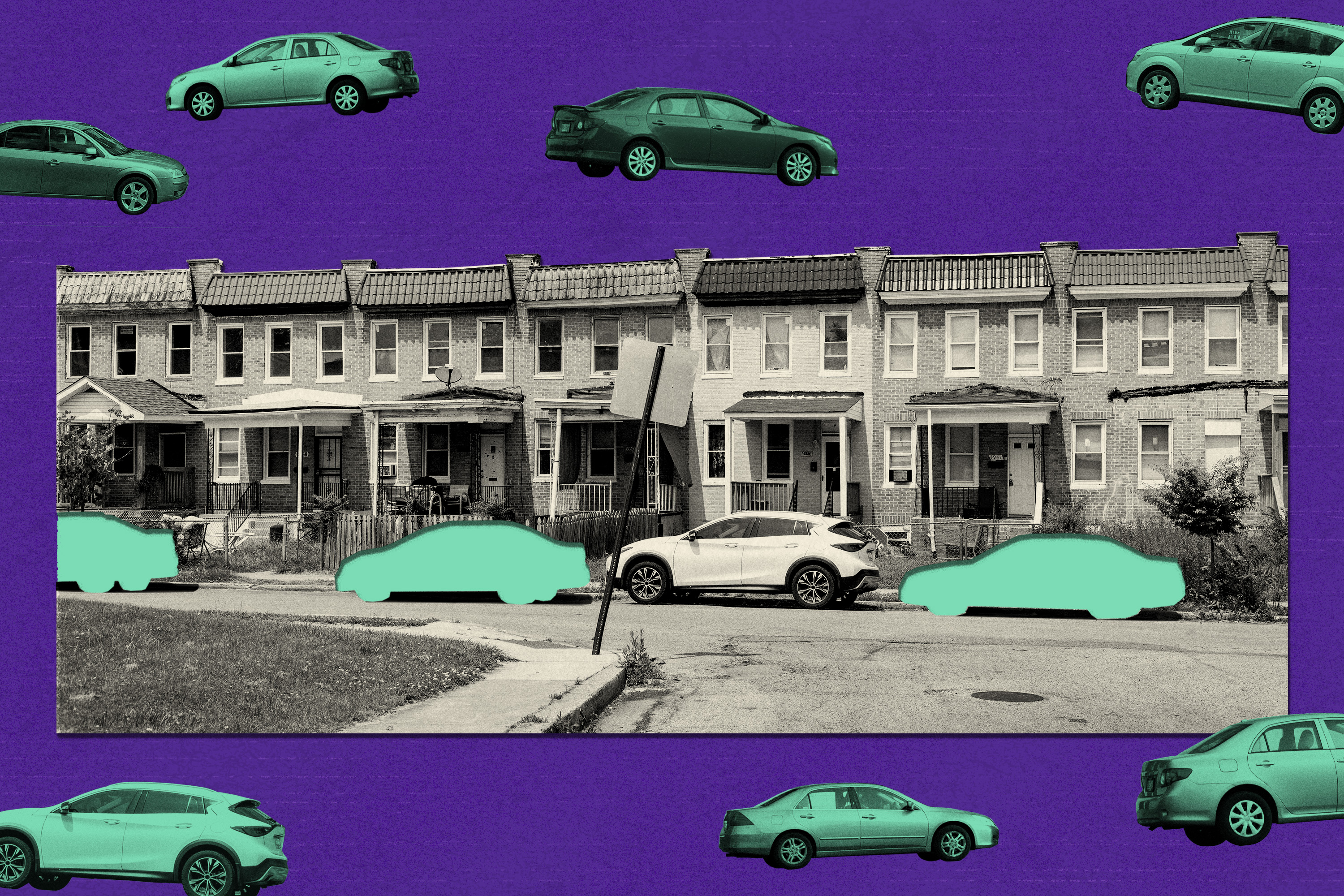If you received an auto insurance renewal notice in July with higher rates, you weren’t alone. Car owners across Maryland saw their premiums soar.
Rates in the state are going up, in part, because of a surge in car thefts. National data shows half a million vehicles were reported stolen in the first half of the year — a 2% increase compared to the first half of 2022. In Baltimore, the number of vehicles stolen this year has tripled to rates not seen since the mid-’90s.
Kia and Hyundai owners have been hit the hardest after viral TikTok videos showing how to steal the vehicles using a screwdriver and a USB charging cord amassed millions of views. Last week, Baltimore Police said 68 percent of stolen autos are Kias and Hyundais.
The insurance company State Farm has even stopped accepting new customer applications in some states for certain model years and trim levels of Hyundai and Kia vehicles.
“This is a serious problem impacting our customers and the entire auto insurance industry,” Justin Tomczak, State Farm chief of communications, wrote in a statement to The Banner. “We take seriously our responsibility to manage risk and the impact of excess claim costs on all our customers. In this case, it became necessary to take action to protect our policyholders and our business.”
This story is part of a deep dive on auto thefts.
Read more in this series:
Insurance rates are based on a variety of factors, such as your age, type of car and driving history, but also things like accident and crime rates in your ZIP code.
Baltimore City has the highest car insurance rates of any jurisdiction in Maryland, a Banner analysis of Maryland Insurance Administration sample insurance data found. Baltimore County had the second-highest rates in the state. Rates were about 20% higher in Baltimore City than in Baltimore County. Prince George’s County was third.
“Theft in and of itself is not the only rating factor,” said Dave Pieffer, chief operating officer at Maryland Auto Insurance. But it is having an impact.
Known as the “carrier of last resort,” Pieffer said, Maryland Auto Insurance covers a lot of drivers in low-income areas who typically have older cars and live paycheck to paycheck. This means writing policies in areas that are prone to higher theft is becoming a bigger issue, Pieffer said.
“But I will tell you, what we’re seeing — and notably in the industry — is that car thefts, which are very high in Baltimore City and in Maryland, is going to start having an effect on comprehensive rates for everybody across the country. And for us, we’re looking at about a 5% increase in our rates” as early as next year, Pieffer said.
Several other auto insurers — including Geico, Allstate, Liberty Mutual, USAA and Erie — didn’t respond to The Banner when asked how auto thefts were affecting their rates and policies.
The Banner analyzed insurance premiums for 30-year-old men and women using three common insurers and Maryland Auto Insurance. The Banner averaged the four premiums for each ZIP code available for each county.
The average annual premium in Baltimore City was about $5,000, more than double the $2,250 average premium in Talbot County — the lowest average annual rate in the state.
Little recourse to combat high rates
In Maryland, vehicle insurance is mandatory. State law requires a driver to carry a minimum of $30,000 coverage for bodily injury per person, $60,000 for bodily injury per accident and $15,000 for property damage per accident. If you drive without insurance, you could face fines and other penalties that could lead to your car being impounded.
The Maryland Insurance Administration regulates the state’s insurers, and it reviews rates to ensure that they are reasonable, or “actuarially justified,” said Craig Ey chief of communications and public engagement for the state agency. However, the agency does not have the authority to challenge a rate so long as it falls within a justified range.
“We cannot require them to change a rate because the MIA considers it excessive,” Ey said. He recommends policy holders asking their insurance providers about all the discounts they may qualify for.
The Insurance Administration also distributed a consumer alert and an industry bulletin — a notice to insurers — on the Hyundai and Kia issue earlier this year, noting that refusing to cover the vehicles is a violation of Maryland law.
If you’re looking to lower your premium, the state agency has a couple of recommendations. One way is to bundle multiple policies with the same insurer, called a multi-policy discount. This applies when you pair your auto insurance with your home or renters policy through the same insurer.
Insurers may also offer a discounts such as safe driver, good student, claims-free and safety equipment your car may have, so it’s important to double check that your policy is based on your current driving habits and coverage needs.
Other ways to save on rates include paying a higher deductible for either comprehensive or collision coverage. Deciding what you can afford to pay out of pocket if your car is totaled, for example, could lower your rate.
If you have talked with your insurer and are still unhappy with your rates, the state Insurance Administration also recommends shopping around for a more competitive rate. You’ll want to have a copy of your current policy available when getting a quote from other insurers to make sure you’re getting a similar level of coverage.
penelope.blackwell@thebaltimorebanner.com
More From The Banner
:format(jpg)/cloudfront-us-east-1.images.arcpublishing.com/baltimorebanner/MVTYU3EZMNCSJKR7KMZCMFHYXQ.png)
Unaccompanied migrant children come to Maryland at a higher rate than any other state
:format(jpg)/cloudfront-us-east-1.images.arcpublishing.com/baltimorebanner/M6BKN35VF5HTFCKJR3RT3JYZO4.jpg)
Johns Hopkins ‘free Palestine’ protest remains peaceful, but tensions run high
:format(jpg)/cloudfront-us-east-1.images.arcpublishing.com/baltimorebanner/DSL72RE5QNBPZBMINZLPBVFJQU.jpg)
Baltimore’s oddest island: Key Bridge shines new light on abandoned fort
:format(jpg)/cloudfront-us-east-1.images.arcpublishing.com/baltimorebanner/MQEWAUUU4RECJGLRFV43P7LUYY.jpg)
:format(jpg)/cloudfront-us-east-1.images.arcpublishing.com/baltimorebanner/GQURUXRE3BHCLOEGUWGUWDM434.jpg)
:quality(70)/cloudfront-us-east-1.images.arcpublishing.com/baltimorebanner/5G5SAZCLI5C6BBX3G3K3MAWTK4.jpg)

:quality(70)/s3.amazonaws.com/arc-authors/baltimorebanner/8ea7218f-ba72-4b32-ad68-28b5cf808995.png)